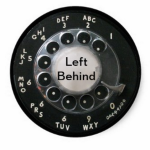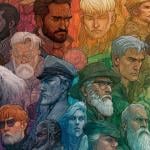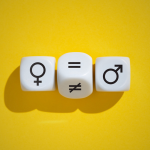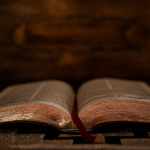I have known next to nothing about Mormons. Growing up as an evangelical Christian I was taught that Mormonism was a cult. A few youth group friends got into studying how to evangelize Mormons. They learned its history, and honed rhetorical strategies on the off chance they’d get to witness to a Mormon. I thought it was a waste of time. I had read the brochure – Mormons didn’t believe in the Trinity, black people were not acceptable to God, women were to be saved through their husbands, polygamy, mind control, Salt Lake City, magic peep stones, golden plates… whatever.
With the recent election and Mitt Romney’s Mormonism I’ve become a bit more interested. I couldn’t figure out how evangelicals (these are my people btw), were suddenly ready to give a Mormon a religious hall pass, especially given past attitudes toward Mormonism and the intense scrutiny of President Obama’s faith life. Obama’s religion has been a huge point of contention among many evangelicals. How did a Mormon candidate for president get Ralph Reed and Billy Graham on team Mitt while nobody said a thing about the fact that he is a Mormon?
Since then I’ve been reading Under the Banner of Heaven, so you can imagine what I am thinking right now. Krakauer characterizes Joseph Smith as a P.T. Barnum-like huckster who early in his adulthood was actually convicted of defrauding people by charging them money in order to find buried treasure with his peep-stones. Next thing you know he’s started his own religion and became a venerated saint. What has surprised me most about the LDS history isn’t the polygamy, the treatment of women, or their racism toward African Americans, but the incredible violence of their past. Sure these were violent times. Just read up on the Mountain Meadows Massacre and you’ll get a little taste.
I do not think Mormonism is a cult, per se, although from what I understand I think Mormon Fundamentalism should be considered a cult. Nevertheless, the mainstream LDS Church isn’t a Christian sect, or a Christian subset, or even Christian. Mormons are not Christians by any definition (save their own). They are not Trinitarian. Near as I can tell the LDS doctrine of God is a convoluted modalism. LDS soteriology has nothing in common with Judeo-Christian soteriology. Worship is different, eschatology is different – it’s not a Christian religion. It is its own thing.
Stephen Mansfield’s recent book, The Mormonizing of America might be my next read on the subject. He wrote an article recently in The Huffington Post – here’s an excerpt:
There are nearly seven million Mormons in America. This is the number the Mormons themselves use. It’s not huge. Seven million is barely 2 percent of the country’s population… In fact, worldwide, there are only about fourteen million Mormons. That’s fourteen million among a global population just reaching seven billion. Fourteen million is the population of Cairo or Mali or Guatemala. It’s approximately the number of people who tune in for the latest hit show on network television every week. Fourteen million Americans ate Thanksgiving dinner in a restaurant in 2011. That’s how few fourteen million is.
Yet in the first decade or so of the new millennium, some members of the American media discovered the Mormons and began covering them as though the Latter-day Saints had just landed from Mars. It was as though Utah was about to invade the rest of the country. It was all because of politics and pop culture, of course. Mitt Romney and John Huntsman were in pursuit of the White House. Glenn Beck was among the nation’s most controversial news commentators. Stephenie Meyer had written the astonishingly popular Twilight series about vampires. Matt Stone and Trey Parker had created the edgy South Park cartoon series–which included a much- discussed episode about Mormons–and then went on to create the blatantly blasphemous and Saint-bashing Broadway play The Book of Mormon. It has become one of the most successful productions in American theater history.
Meanwhile, more than a dozen Mormons sat in the US Congress, among them Harry Reid, the Senate Majority Leader. Mormons led JetBlue, American Express, Marriott, Novell, Deloitte and Touche, Diebold, and Eastman Kodak. Management guru Stephen Covey made millions telling them how to lead even better. There were Mormons commanding battalions of US troops and Mormons running major US universities. There were so many famous Mormons, in fact, that huge websites were launched just to keep up with it all. Notables ranged from movie stars like Katherine Heigl to professional athletes to country music stars like Gary Allan to reality television contestants and even to serial killers like Glenn Helzer, whose attorney argued that the Saints made him the monster he was. The media graciously reminded the public that Mormon criminals were nothing new, though: Butch Cassidy of Butch Cassidy and the Sundance Kid fame was also a Mormon, they reported.
Most media coverage treated this “Mormon Moment” as though it was just that: the surprising and unrelated appearance of dozens of Mormons on the national stage–for a moment. More than a few commentators predicted it would all pass quickly. This new Mormon visibility would lead to new scrutiny, they said, and once the nation got reacquainted with tales of “holy underwear” and multiple wives and Jewish Indians and demonized African Americans and a book printed on gold plates buried in upstate New York, it would all go quiet again and stay that way for a generation. In the meantime, reruns of HBO’s Big Love and The Learning Channel’s Sister Wives would make sure Mormon themes didn’t die out completely.
You can read the rest of the article here.












